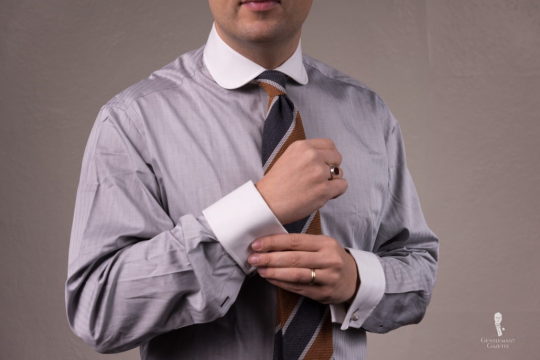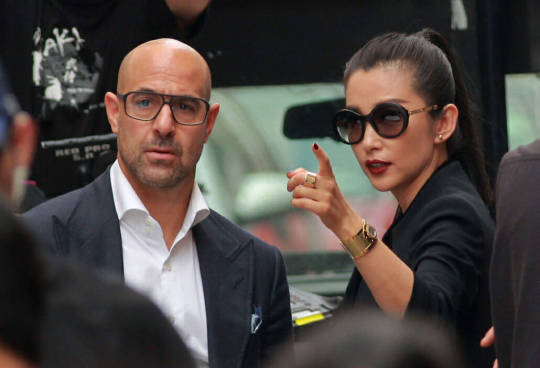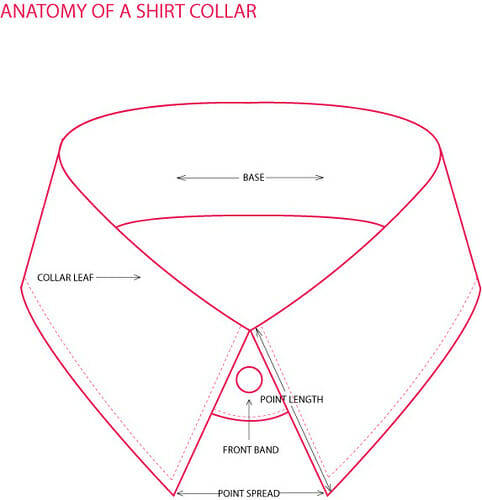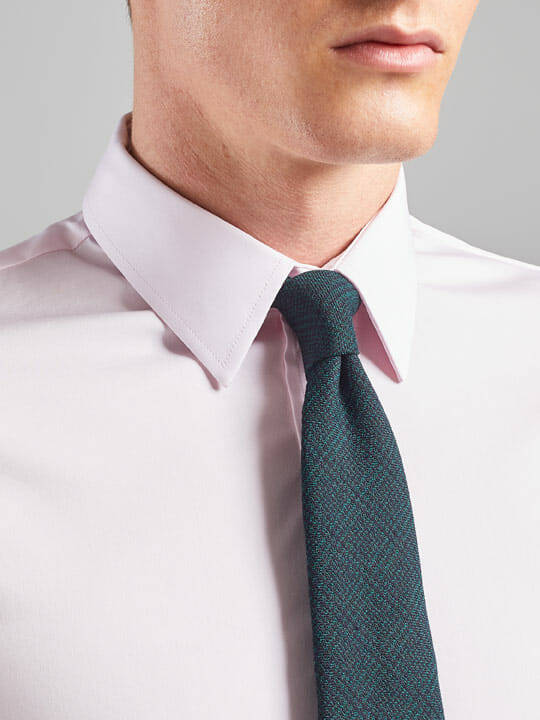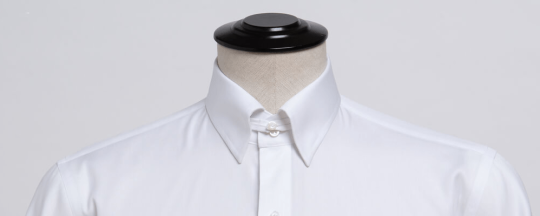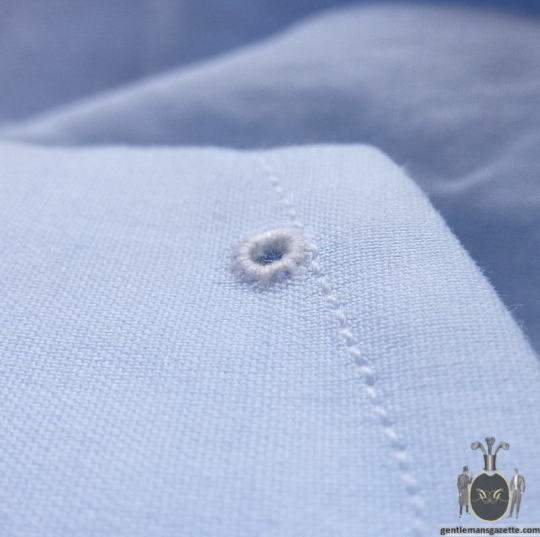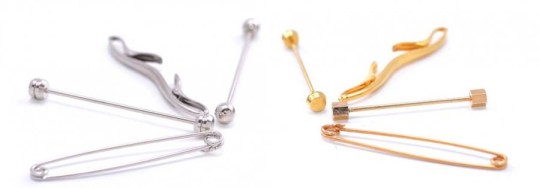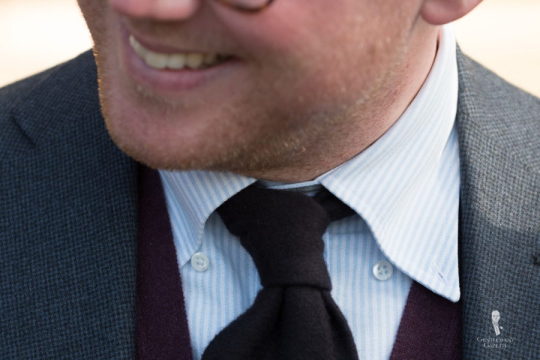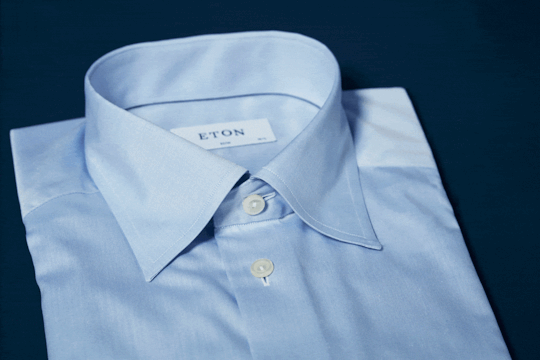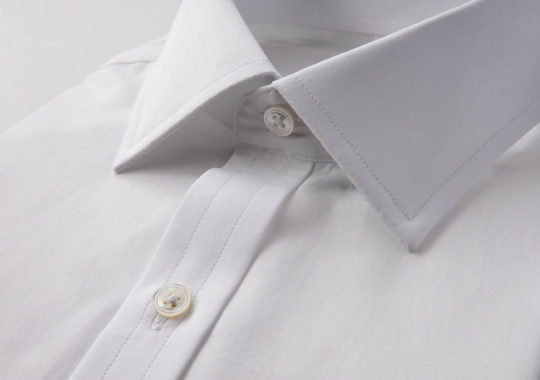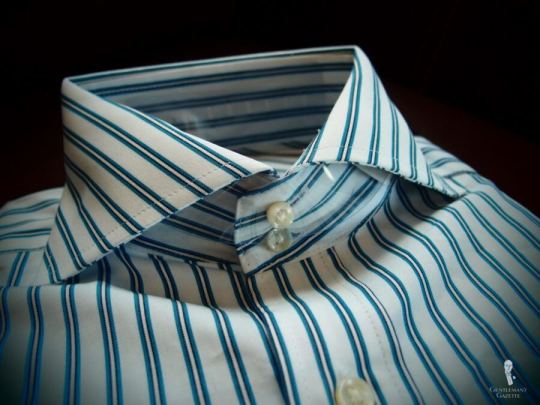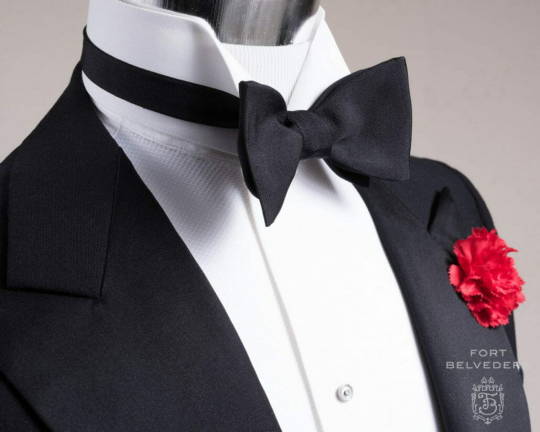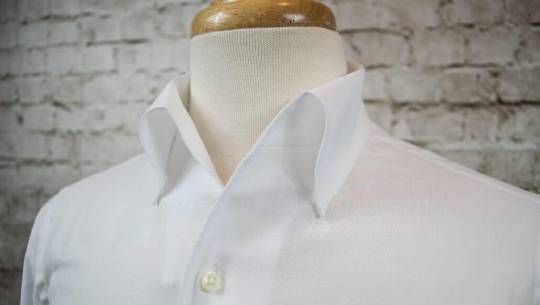Within the framework of a standard men’s dress shirt, many variations can exist; there are differences in fit, cuff style, buttons, and so on. But what of the collar? Read on to discover the many variations.
If you’re in North America, the first dress shirts you bought probably had some kind of point collar; in Britain and mainland Europe, you likely bought spread collars. In either case, you may not have thought much about the collar style–it was just a shirt. However, when you begin to explore the nuances of classic menswear, you’ll uncover an incredible range of different collar possibilities, and you’ll likely be interested in trying them. Here’s a primer to get you down the rabbit hole.
Shirt Collar Parameters – The Factors Behind the Styles
Before we begin to look at the wide variety of collar styles available, it’s useful to consider the various parameters that influence how a collar looks. These are level of stiffness, height, size, and spread.

1. Collar Stiffness
From the 1820s to the 1930s, stiff collars (made so by the liberal application of starch) were the norm. These collars were detachable for replacement in an era where effective detergents and laundering were not available. Nowadays, a reminder of the stiff detachable collar exists in contrast-collar shirts (also called Winchester shirts), but collar stiffness is determined by the thickness of the fused (glued) interlining used to form the collar.
Influenced by Italian style and the Duke of Windsor, soft collars are more popular these days, particularly with soft tailoring. So, if you prefer sport coats that have natural unpadded shoulders, a soft shirt collar can also be chosen to continue the Neapolitan style. Soft collars are more casual as well, so they are perfect for warm weather and relaxed looks anytime. On the other hand, if you are wearing a formal business suit, a firmer collar is the better option for a crisp and sharp appearance. Something in between the two–a medium hardness–may be the most versatile choice. When going made-to-measure or bespoke with shirts, you can usually select your collar stiffness.
2. Collar Height
Collar height is the measure of how high a collar sits on your neck, measured from the fold down to the point. Taller collars are more formal as well as more aggressive; they communicate that you’re a boss. When choosing a shirt for the workplace, be aware of the impression that collar height makes. A high collar is more typical of Italian style and can even require two collar buttons to support the added height. Taller collars can also require some getting used to in terms of the way they feel on your neck. If you’re interested in trying a shirt with a tall collar, consider some offerings from brands like Proper Cloth and Eton.
3. Collar Size
Related to height is overall size. Some collars, like the cutaway, which we will discuss below, are small and minimalist. Other collars are quite large. Collars at either extreme are more rakish and non-conformist. So, again, something of moderate size is ideal for business. For pleasure, the choice may be purely determined by your face shape. If you have a large head or round face, a bigger collar is more suitable to balance out your appearance. Wearing a tiny collar in such cases will only make your face look disproportionately larger. Keep in mind that collar style should conform to face shape, and in terms of size, you want to choose one similar to the size of your head and face.
4. Collar Spread
Lastly, there is collar spread–basically, the distance between the points of the collar. The wider the spread, the more aggressive. Face shape again comes into play. If you have a thin or narrow face, a spread collar can help counterbalance that; wearing a narrow collar in this case will only enhance the impression of narrowness and make your head look longer. On the other hand, if you have a wide or round face, wearing a collar with the points closer together will slim down your face. So, unlike collar size, in terms of spread, you want to choose essentially the opposite of your face width. A convenient means of categorizing shirt collars is by the distance between the points from narrow to wide.
Types of Shirt Collars
1. The Point Collar
In North America, the standard or default business collar is likely the point. As evident from the name, this style is characterized by the fact that the collar tips are pointed. The spread between the points is small (in the range of 1.5″ at the very narrow range to 3.5″). As such, your collar will not expose any of the tie on either side beyond the knot if you wear a four-in-hand. When wearing a jacket, the points of the collar will not be covered by the lapels. This collar flatters if you have a wide face. A point collar seems to work best in medium stiffness. A stiff point collar will make the collar stand away from the shirt when you are wearing a tie, so there is a gap between the collar and the shirt.
1a. The Spear Collar
A retro version of the point collar is the spear, which, like its namesake, has really long points. These have made something of a comeback of late because their length is considered a rakish change of pace while still being usable in the same circumstances as the standard point. You can find versions of this collar in shops with vintage style; the point-collar shirts sold by Edward Sexton are also quite narrow and thus lean toward being spears.

2. The Tab Collar
Speaking of vintage, within the same spread range as the point collar but with a distinctly classic look is the tab collar, which features an underlying tab beneath each collar leaf that fastens on the top button. This pulls the collar tips closer together while also lifting the knot of your tie for an even more distinguished appearance. Because of the tabs, this collar can only really be worn with a necktie, not open at the neck.
3. The Club Collar
Another collar with a narrow spread and a vintage appearance is the club worn by Sven Raphael Schneider toward the top of the article. This collar originated at Eton College, which had previously been the incubator of Beau Brummell’s stylistic innovations. The young gents who attended there were looking for a way to distinguish themselves from other schools and hit upon rounding off the collar points, which is the defining feature of the club collar. It is possible to wear a club collar that is also a tab collar, as the former is defined by the shape of the collar leaves and the latter by the presence of a hidden tab.

4. The Pin Collar
The various collars with a smaller distance between the leaves or points lend themselves readily to the use of collar pins, clips, or bars. These are accessories designed to close the space between collar points while also elevating your tie knot. If your shirt is designed with special holes in the collar leaves, you can use a collar pin, which looks like a large safety pin, or a collar bar, which resembles a barbell with an end that unscrews. Such special pin collars are sold by Eton and Edward Sexton among others. Like the tab collar, because the pin or bar draws the collar leaves closer together the spread of such a collar will never be wide.
You can also create the look of a true pin collar with a collar clip, which can be used with point or club collars without punching holes in them. Like cuff links, collar pins are a bit of “man jewelry” to elevate your personal style. Since they were popular mainly in the first half of the 20th century, they do create a vintage look and will get attention. Fort Belvedere offers a variety of these accessories in silver and gold for you to try.
5. The Square Collar
There are also shirt collars that are quite small with a minimal spread, among them the square collar, so called because the collar points are squared off. These were worn, usually in detachable form, in the early twentieth century, but are quite hard to find today.

6. The Button Down Collar
Although it originated on England’s polo fields, the button down collar has become an American favorite after it was introduced by Brooks Brothers, especially as part of Ivy, prep, and trad styles. The button-down collar is a variant on the point-collar dress shirt and is stylistically appealing for those who want to dress down but. But, in today’s casual world, a button-down with a tie and a sport coat is still quite well dressed. Fans of sprezzatura will leave the buttons open, or even just one button, to project a sort of nonchalance. For others, doing this can seem sloppy or c0ntrived, however, so it’s a matter of personal style.
Some button down collars are soft and others are not. Those who like collar roll, where a longer collar curves to create some space around the tie knot, love a soft button down for achieving this effect. You can see this in the image directly above. I like collar roll, but the buttons on the button down are too casual for me, so an option is the hidden button down, which contains snaps or a loop and button beneath the collar points, allowing the roll and the collar to sit in the same way but with the buttons hidden.
7. The Spread Collar
Once the distance between the collar point widens we have a spread collar, noted as the default collar of London (and European) business wear. The spread collar was originally popularized as a means of wearing wider tie knots like the Windsor and Half-Windsor, but some spread collars will still allow you to wear a four-in-hand without exposing the string of your tie next to the knot. A spread collar will also accommodate thicker ties, such as those made of wool, cashmere or other heavier fabrics. The line between the spread and cutaway collar is not well defined as some brands (Eton, for one) call their spreads cutaways, and there can exist a range of distances between the collar points. Usually a 4″ distance could be considered “semi-spread” with most spread collars showing 5-6″ between the collar points. We can also look at it in terms of angles, with the angle formed by the spread collar being 45 degrees or greater. Generally speaking, a wider spread collar is more suitable for men with a narrow face shape, as it draws the viewer’s eyes outward, creating the impression of a wider face.
8. The Cutaway Collar
The cutaway collar is a type of spread collar that is defined by the wide distance between points (over 6″) or the obtuse angle formed by said points. In some cases, the angle of the collar can be a completely horizontal 180 degrees (or zero, depending how you look at it); that is, the front of the collar forms a nearly straight horizontal line.
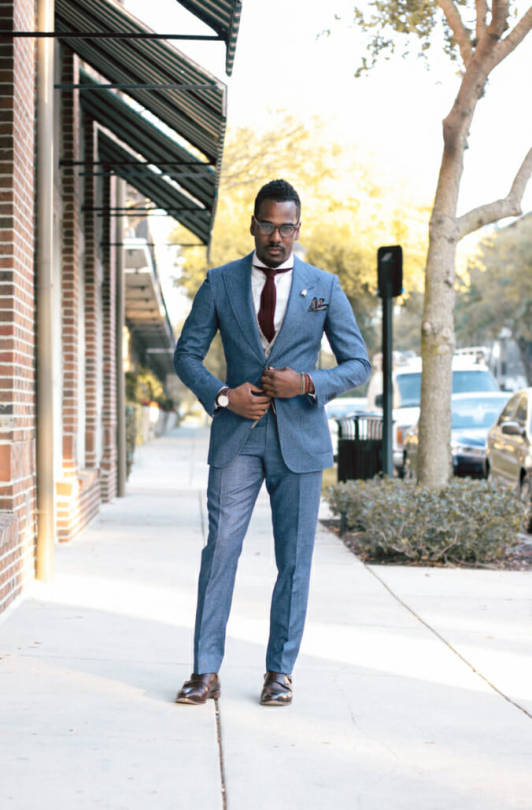
For cutaway collars, a large tie knot is essential to avoid showing the string of the tie along with the knot, though some men will tie a regular four-in-hand and rev as a nod to rakish indifference. In collars that are labeled “extreme cutaway,” the collar points actually angle backwards, behind the neckband. This collar can be favored in Italian, especially Neapolitan, tailoring and is quite an aggressive look. If you wear these at all, they are best worn tieless with the top button or two open. If worn with a necktie, the string of your tie will definitely show next to your knot.
9. The Band Collar
The concept of the cutaway collar taken to its farthest extreme would lead the collar leaves to disappear completely, leaving just the band. This sort of collar, standing 1-2″ high can be referred to as a Mandarin for its origins in Chinese clothing and a granddad shirt (when worn as part of a casual, rustic American style). This shirt must be worn tieless.
10. The Wing Collar
Reserved only for the most formal events is the wing collar, also known as the winged or wingtip, belongs among the minimalist collars because its points are quite small. The tips stand up and are directed horizontally so they resemble the open wings of a bird. This collar is most often worn with a bow tie and is actually supposed to be reserved for white tie events, though some men today enjoy its vintage look with a tuxedo. You may also see the wing collar worn by valets or butlers with a black neck tie in period pieces such as Jeeves and Wooster.
Other Specialty Collars
1. The One-Piece Collar
Known as the Hollywood or Cooper collar because it was famously worn by Gary Cooper, the one-piece collar is rare in ready-to-wear shirts. Usually, a shirt collar is constructed separately from the rest of the shirt. A one-piece collar, however, is made from the same piece as the shirt placket, which reinforces it and enables it to stand upright; it also requires tailoring skill to construct. Because of its structure the one-piece collar is tall and has an incredible collar roll, so fans of that look should seek it out. A possible shortcoming of the one-piece is that the points tend to float up or escape from under the lapels of a sport coat if the shirt is worn with the top button open. With a tie, there are no such issues.
2. The Pajama Collar
The collar commonly seen on pajama tops–flat and divided into two parts, resembling a notch lapel on a jacket–is known variously as a pajama collar, Cuban collar, or bowling collar. The look is definitely casual, for warm weather and most commonly seen with short sleeves including on Hawaiian “Aloha” shirts. However, they are mentioned here because they’ve recently made an appearance on long-sleeved shirts worn with tailoring. In some versions the top part of the collar is the longer than the bottom, but it can also be the other way around. The common aspect is that the collar is large, divided, and lays flat.
Conclusion
Various menswear brands have special proprietary names for their collar styles, like the Varsity (Paul Fredrick), the Roma spread (Proper Cloth) or the Martus (the now defunct Welch & Margetson). Whatever the names, these are essentially variants of one of the collar types discussed above, and once that you know the different permutations you can identify the features in any collar. You may start with a more conservative style for work but then you’ll experiment until you find the ideal collar for your face shape and individual taste. I started with the typical American point collar then went with a radical cutaway with an eye toward Italian style. Eventually, I realized this didn’t work well with a tie or my rounder face shape. Now, I’m wearing moderate spread collars with collar roll and long points. Whether I stick with this for the rest of my life is yet undetermined. So, where are you in the process of trying shirt collars? What’s your favorite? Share in the Comments below.
Shirt Collar Styles: A Complete Guide published first on https://medium.com/@sogomart
